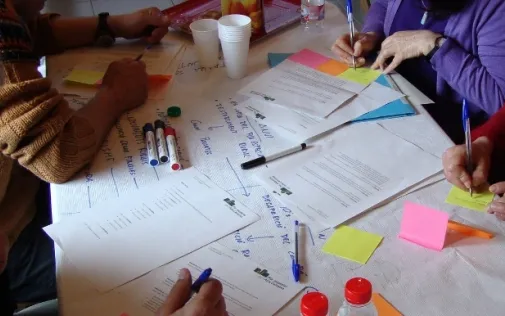
We need to be able to explain all of the services we offer clearly and why, in the case of the Catalan Social Volunteering Federation, we have almost 350 organizations from around the territory eager to join our family.
One of the first lessons you learn at university studying journalism is that you should explain any newsworthy information in a clear and understandable way for the reader. Beyond drafting a new item, this can be extrapolated to many areas of communication, such as explaining who we are and what we do in our organization.
Very often, a federation isn’t the first and main reference of non-profit organizations for citizens. We are a second-level organization whose role isn’t to directly deal with users, and this makes it difficult to make our task visible. Ultimately, it is a big challenge when it comes to explaining our mission.
Explaining that our members aren’t the people who loyally believe in their work of an organization but rather other organizations that have placed their trust in us is the number one challenge. We need to be able to explain all of the services we offer clearly and why, in the case of the Catalan Social Volunteering Federation, we have almost 350 organizations from around the territory eager to join our family.
This trust is also a great responsibility. At the communication department of a federation like ours, we must be very much aware that we act as a loudspeaker for many organizations. We support the dissemination of all their events and relevant news, offering them the advantage of reaching to many people that, for some organizations, especially the smaller ones, would be very difficult to do by themselves.
Besides its member organizations, the Catalan Social Volunteering Federation has another target audience to whom we should communicate: citizens. Every day, we work so that people who have an interest in volunteering or who are already volunteers, can know that they have a reference organization taking care of them, guiding them and fighting for recognition and to boost the transformative power of volunteering. Therefore, communication is done in terms of the member organizations, but also communicating to citizens.
Our role as an umbrella for second-level organizations means we have a very global vision on our sector, and that we don’t just focus our communication the piece of the puzzle that forms our organization. It is clearly enriching to play this role of supporting the communication of our members, both the smaller ones, which often don’t have a person dedicated exclusively to communication, and the larger ones.
Although the non-profit sector and the field of journalism form a binomial that has suffered a great deal from the financial situation in recent years, non-profit organizations must know that communication needs to be at the heart of their organizational DNA. Having a person who is in charge of communication and/or having the support of a second-level organization will bring a real plus to the organization because “anything that isn’t communicated doesn’t exist”.



Add new comment